PIB Headquarters
From Urban Hubs to Rural Heartlands
KVS and NVS Driving Educational Equity
Posted On:
10 NOV 2025 2:12PM by PIB Delhi
Key Takeaways
- As on October 2025, there are 1290 functional Kendriya Vidyalayas (KVs) across the country.
- Government of India has approved the opening of 57 new Kendriya Vidyalayas (KVs) within the next 9 years with a budget outlay of Rs. 5862.55 crore (approx.)
- There are 662 Navodaya Vidyalayas operational across the country as on October 2025.
- For 2024-25, the Navodaya Vidyalaya Samiti (NVS) schools were allocated Rs. 5370.79 crore as Grant-in-Aid.
- Under the PM SHRI scheme, 913 KVS and 620 NVS schools have been upgraded as exemplar institutions.
Introduction
The Indian education system plays a pivotal role in shaping the nation’s future. It fosters knowledge, skills, and values among millions of students, serving as a cornerstone for social and economic development. Within this framework, Kendriya Vidyalaya Sangathan (KVS) and Jawahar Navodaya Vidyalaya (JNV), function as autonomous bodies under the Ministry of Education (MoE), Government of India. Both are dedicated to providing high-quality, equitable education across the country.
KVS focuses on delivering uniform, quality education, primarily to the children of transferable Central Government employees, including those from defence and paramilitary services, and state government employees and other categories of public, and single girl child, in a preferential order[1] while promoting national integration and academic excellence in alignment with the National Education Policy (NEP) 2020.
NVS, on the other hand, provides free residential education to talented rural children through merit-based selection, aiming to bridge urban-rural educational divides and foster holistic development, also in line with the NEP 2020.
Collectively, these institutions serve over 15 lakh students across diverse geographies, contributing to inclusive growth and equity in India's school education ecosystem.
Historical Overview
The Kendriya Vidyalaya Sangathan schools, widely referred to as Kendriya Vidyalayas (KVs), since their inception, have proven critical in ensuring quality education for children of government employees. On the other hand, the schools under the Navodaya Vidyalaya Samiti, widely known as Navodaya Vidyalayas (NVs) function to empower rural talent through free residential schooling. Both follow CBSE, promoting holistic learning and national integration.
Kendriya Vidyalaya Sangathan (KVS)
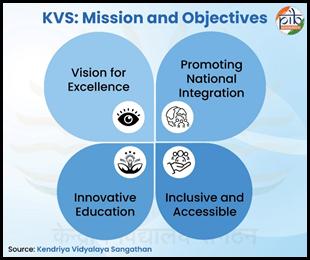 Established in November 1963 (marking its 62nd year in 2025), KVS originated from the Central Schools Organization (CSO) in 1962. The KV schools aim to address educational needs of wards of transferable and non-transferable government employees, by providing a common programme of education amid frequent relocations.
Established in November 1963 (marking its 62nd year in 2025), KVS originated from the Central Schools Organization (CSO) in 1962. The KV schools aim to address educational needs of wards of transferable and non-transferable government employees, by providing a common programme of education amid frequent relocations.
Over the recent years, KVS has evolved into a nationwide network, with continuous expansion driven by proposals from ministries, states, and UTs, prioritising underserved areas.
All Kendriya Vidyalayas are affiliated with the Central Board of Secondary Education (CBSE) and follow the curriculum from Balvatikas I, II & III and Class I to Class XII, aligned with the National Curriculum Framework (NCF) 2023 and the latest guidelines. The curriculum emphasises holistic development with a strong focus on academics, co-curricular activities, and skill-based learning.
Navodaya Vidyalaya Samiti (NVS)
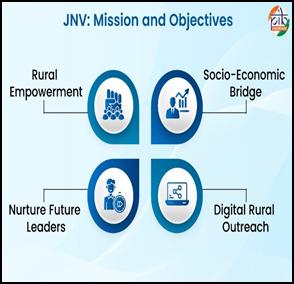 Launched in 1986 under the National Policy on Education-1986, NVS began with 2 pilot schools to nurture rural talent through residential, co-educational facilities affiliated to CBSE. It aims to provide free, high-quality education to talented children from rural backgrounds, regardless of their socio-economic background.
Launched in 1986 under the National Policy on Education-1986, NVS began with 2 pilot schools to nurture rural talent through residential, co-educational facilities affiliated to CBSE. It aims to provide free, high-quality education to talented children from rural backgrounds, regardless of their socio-economic background.
As on October 2025, 662 Navodaya Vidyalayas are currently operational across the country.
All NVS schools follow the CBSE curriculum from Class VI to XII, implementing the Three Language Formula (regional language, Hindi/English, and a third modern Indian language linked to student migration) to promote multilingualism and cultural integration, in line with National Curriculum Framework (NCF) guidelines.
Urban Edge vs Rural Resilience: Infrastructure Realities of KVS and NVS
Both Kendriya Vidyalaya Sangathan and Navodaya Vidyalaya Samiti adhere to CBSE norms for facilities like science labs, libraries, and sports grounds. Their respective infrastructures reflect their operational priorities, i.e., KVS leveraging urban accessibility for advanced tech integration and NVS fortifying rural setups for self-sufficiency.
|
Aspect
|
KV (Kendriya Vidyalayas)
|
NV (Navodaya Vidyalayas)
|
|
School Count
|
1,290 [2]
|
689 Sanctioned (one per district, fully residential)
|
|
Student Capacity
|
13,71,306[3]
|
3,10,517 (as on 30.09.2025)
|
|
Facilities Focus
|
Digital language labs, e-classrooms[4]
|
Smart Classrooms for digital bridging; Digital language labs
|
|
Geographic Spread
|
Urban/semi-urban[5]
|
Rural interiors (remote district coverage)[6]
|
Funding Foundations: Sustaining Growth Through Strategic Allocations
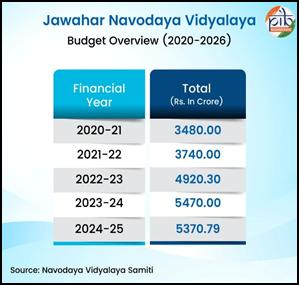
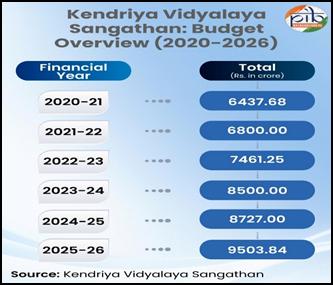 Budgetary support from the Union Government ensures operational continuity and expansion for Kendriya Vidyalaya Sangathan schools.
Budgetary support from the Union Government ensures operational continuity and expansion for Kendriya Vidyalaya Sangathan schools.
For NV, funding prioritises residential operations and rural construction, with Rs. 5370.79 crore allocated as Grant-in Aid for 2024-25. In addition to this, a sum of Rs. 585.34 crores being the opening balance as on 1st April 2024 was also allowed to be utilised during the year 2024-25, besides Internal receipts of Rs. 44.70 crores were also realised during the year. Thus, the total amount available with the NVs during the year 2024-25 was Rs. 6000.83 crores.
2025 Milestones: Igniting Expansion and Digital Sparks
In 2025, KVS and NVS continue their policy-driven growth and tech infusions, building on the foundations of the National Education Policy (NEP) 2020. These developments not only augment physical capacity but also introduce new teaching methods to prepare students for the future.
On October 1, 2025, the Union Cabinet approved the establishment of 57 new civil-sector KVs across the country, with a total outlay of Rs. 5,862.55 crore (approx.) spread over a period of nine years from 2026-27. The total fund includes Rs. 2,585.52 crore allocated for capital expenditure (land, buildings, equipment) and Rs. 3,277.03 crore for operational expenses[7]. This initiative targets underserved districts, enhancing access for students and bolstering NEP goals like multilingualism and skill integration. Complementing this, 913 KVs have been upgraded under the PM Schools for Rising India (PM SHRI)[8] scheme[9], transforming them into exemplar institutions with features like activity-based learning spaces, digital resource hubs, and leadership programs to embody NEP's holistic vision.
For NVs, on the December 6, 2024, the government approved the establishment of 28 new NVs with an outlay of Rs. 2,359.82 crore spread over five years, from 2024-2025 to 2028-2029. This includes capital expenditure of Rs. 1944.19 crore and operational expenditure of Rs. 415.63 crore.[10] [11].
Digital Dawn: Empowering Classrooms through Technology
Both Kendriya Vidyalaya Sangathan and Navodaya Vidyalaya Samiti schools have rolled out cutting-edge digital initiatives in 2025, leveraging PM SHRI synergies to democratise learning. KVS's comprehensive ICT framework, updated in October 2025, equips 90% of schools with smart classrooms, AI-driven adaptive learning tools, and virtual labs, enabling hybrid sessions via the DIKSHA platform for personalised NEP-aligned content[12].
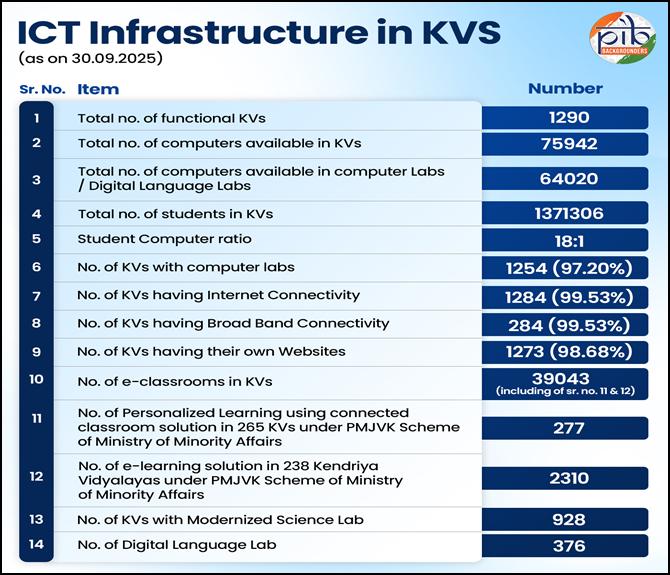
Navodaya Vidyalaya reinforces this commitment through the Smart Classrooms. As of now, a total of 9,417 Smart Classrooms including laboratories have been established across NVs. There is dedicated leased line internet connection in 311 NVs and remaining NVs have Broadband Connectivity. Further, all NVs located on permanent campuses have a dedicated computer laboratory. To strengthen IT infrastructure, NVS is working to provide desktops/laptops as per the requirements of each NV. Currently, there are approximately 40 desktops per NV, totalling around 26,118 desktops across all NVs. 312 Digital Language Labs have also been established under the PM SHRI Project, along with 100 English and 100 Hindi Language Labs under the CBSE CSR Project.
PM SHRI Scheme: Driving KVS and NVS to NEP Excellence
Building on the momentum of 2025's expansions and digital integrations, the Pradhan Mantri Schools for Rising India (PM SHRI) scheme stands as a transformative pillar, upgrading select KVS and NVS institutions into model exemplars of the National Education Policy (NEP) 2020. Launched in 2022 with Rs. 27,360 crore over five years (2022-2027)[13] [14], this initiative aims to transform 14,500+ schools into holistic learning hubs by 2027. These schools will promote NEP’s equity, quality, and innovation while mentoring nearby institutions. By embedding multidisciplinary curricula, experiential learning, and sustainable practices, PM SHRI bridges infrastructural and pedagogical gaps, ensuring KVS's urban-focused stability and NV's rural empowerment align seamlessly with national goals for inclusive education.
Synergising Strengths: PM SHRI's Tailored Impact on KVS and NVS
In KVS, PM SHRI upgrades amplify the organisation's role in serving transferable and non-transferable government families by infusing advanced pedagogies in 913 schools[15]. This, in turn, cultivates dynamic learning environments enriched with activity-based instruction, digital resources, and leadership development opportunities. These enhancements, including eco-clubs and vocational labs, directly support NEP's emphasis on foundational numeracy and literacy, with majority of PM SHRI KVs now featuring smart classrooms and AI tools for personalised education, benefiting approximately 10 lakh students across urban hubs[16].
In line with the National Education Policy 2020, nearly all Navodaya Vidyalayas have been recognised as PM Shri schools, with the current number of schools standing at 620[17], serving as model institutions and setting a benchmark for other schools to follow[18]. The scheme integrates rural talent nurturing with NEP's equity focus, with schools transforming as innovation centres equipped with digital skill hubs and cultural exchange programs. This collaboration improves academic results and promotes national unity, making KVS and NVS leaders in building a skilled, united India.
Foundations First: ECCE Weaving Early Learning into KVS, NVS, and Balvatika Frameworks
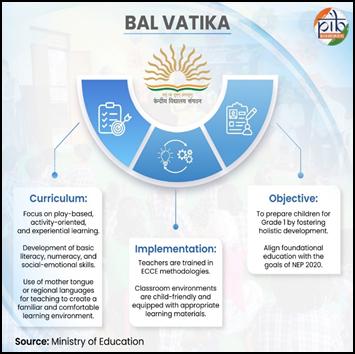 As digital and infrastructural advancements fortify upper-level education, Early Childhood Care and Education (ECCE) emerges as the bedrock. This aligns KVS with NEP 2020's vision of holistic development from ages 3-8 years to cultivate cognitive, socio-emotional, and physical growth. NEP mandates a play-based, multilingual ECCE curriculum through the National Curricular and Pedagogical Framework for Early Childhood Care and Education (NCPFECCE), emphasising joyful learning to achieve foundational literacy and numeracy by Grade 3, with universal access targeted by 2030. This foundational stage integrates seamlessly into central school ecosystems, preparing young learners for seamless transitions while addressing equity in underserved areas.
As digital and infrastructural advancements fortify upper-level education, Early Childhood Care and Education (ECCE) emerges as the bedrock. This aligns KVS with NEP 2020's vision of holistic development from ages 3-8 years to cultivate cognitive, socio-emotional, and physical growth. NEP mandates a play-based, multilingual ECCE curriculum through the National Curricular and Pedagogical Framework for Early Childhood Care and Education (NCPFECCE), emphasising joyful learning to achieve foundational literacy and numeracy by Grade 3, with universal access targeted by 2030. This foundational stage integrates seamlessly into central school ecosystems, preparing young learners for seamless transitions while addressing equity in underserved areas.
Nurturing Young Minds: Balvatika's Role in KVS and Broader ECCE Synergies with NVS
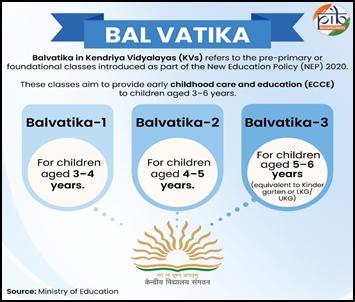 KVS pioneers ECCE through its Balvatika program, operational in 505 schools, focusing on preparatory skills via activity-oriented modules that blend play, arts, and basic literacy, enrolling thousands in a stress-free prelude to formal schooling[19] [20]. Recent expansions, including 57 new KVs approved in 2025, incorporate Balvatika from the inception stage, potentially adding capacity for 13,680 Balvatikas I, II & III students (240 per school norm), reinforcing NEP's 5+3+3+4 structure and inclusivity with 3% reservations for differently-abled children[21] [22].
KVS pioneers ECCE through its Balvatika program, operational in 505 schools, focusing on preparatory skills via activity-oriented modules that blend play, arts, and basic literacy, enrolling thousands in a stress-free prelude to formal schooling[19] [20]. Recent expansions, including 57 new KVs approved in 2025, incorporate Balvatika from the inception stage, potentially adding capacity for 13,680 Balvatikas I, II & III students (240 per school norm), reinforcing NEP's 5+3+3+4 structure and inclusivity with 3% reservations for differently-abled children[21] [22].
While NVS primarily serves Classes VI-XII, it complements ECCE by embedding foundational remediation in entry-level curricula. This aligns with NEP's emphasis on bridging rural gaps through vocational and digital introductions that build on early skills. This, in turn, creates a spectrum where Balvatika graduates feed into merit-based NV admissions for sustained holistic growth. This integrated approach ensures equitable early foundations, empowering over 15 lakh students across both systems to thrive in a knowledge-driven future.
Conclusion: Forging a Unified Educational Legacy for India's Tomorrow
In essence, KVS and NVS exemplify the Indian government's unwavering commitment to equitable, transformative education, harmonising urban accessibility with rural empowerment to serve over 16.5 lakh students in 2025. KVS was established in 1963 to ensure seamless educational continuity, while NVS was launched in 1986 to advance merit-based opportunities in rural India. With strong infrastructure, strategic funding, and planned 2025 expansions, including 57 new KVs and 28 NVs, both institutions are driving NEP 2020’s vision of holistic, skill-focused learning. Bolstered by PM SHRI upgrades in 1,213 schools and ECCE integrations via Balvatika, they bridge digital divides, foster national integration, and nurture future leaders, ensuring every child contributes to a vibrant, inclusive India.
References:
Press Information Bureau:
https://www.pib.gov.in/PressReleasePage.aspx?PRID=2173548
https://www.pib.gov.in/PressReleasePage.aspx?PRID=2081688
https://www.pib.gov.in/PressReleasePage.aspx?PRID=2091737
https://www.pib.gov.in/PressReleasePage.aspx?PRID=1857410
https://www.pib.gov.in/PressReleasePage.aspx?PRID=2173548#:~:text=State/UTs/Ministries/Departments,13.62%20lakh%20(approx.)
https://www.pib.gov.in/PressReleasePage.aspx?PRID=2081688#:~:text=As%20on%20date%2C%20there%20are,education%20is%20accessible%20to%20all
https://www.pib.gov.in/PressReleaseIframePage.aspx?PRID=1857409
Kendriya Vidyalay Sangathan:
https://www.facebook.com/KVSHQ/
https://kvsangathan.nic.in/%e0%a4%95%e0%a5%87-%e0%a4%b5%e0%a4%bf-%e0%a4%b8%e0%a4%82-%e0%a4%aa%e0%a4%b0%e0%a4%bf%e0%a4%95%e0%a4%b2%e0%a5%8d%e0%a4%aa%e0%a4%a8%e0%a4%be-%e0%a4%8f%e0%a4%b5%e0%a4%82-%e0%a4%89%e0%a4%a6%e0%a5%8d/
https://cdnbbsr.s3waas.gov.in/s32d2ca7eedf739ef4c3800713ec482e1a/uploads/2024/02/2024021425.pdf
https://cdnbbsr.s3waas.gov.in/s32d2ca7eedf739ef4c3800713ec482e1a/uploads/2023/11/2023112463.pdf
https://kvsangathan.nic.in/%e0%a4%aa%e0%a5%80%e0%a4%8f%e0%a4%ae-%e0%a4%b6%e0%a5%8d%e0%a4%b0%e0%a5%80-%e0%a4%b8%e0%a5%8d%e0%a4%95%e0%a5%82%e0%a4%b2/
https://kvsangathan.nic.in/en/bal-vatika/
https://kvsangathan.nic.in/en/admission-guidelines/
https://kvsangathan.nic.in/en/ict-infrastructure/
https://kvsangathan.nic.in/en/pm-shri-schools/
https://kvsangathan.nic.in/
https://kvsangathan.nic.in/en/kvs-vision-and-mission/
https://kvsangathan.nic.in/en/syllabus/?_archive=1
https://balvatika.kvs.gov.in/participated-kendriya-vidyalaya
https://bsfbagafa.kvs.ac.in/en/bal-vatika/#:~:text=Balvatika%20in%20Kendriya%20Vidyalayas%20(KVs,foundational%20base%20for%20lifelong%20learning
https://balvatika.kvs.gov.in/participated-kendriya-vidyalaya
https://cdnbbsr.s3waas.gov.in/s3kv059b7bb73d948b38d0ac3e1f8f5515/uploads/2024/07/2024070674.pdf
Navodaya Vidyalaya Samiti:
https://navodaya.gov.in/nvs/nvs-school/GODDA/en/academics/Computer-education-ICT/
https://navodaya.gov.in/nvs/en/About-Us/Establishment-of-JNVs/
https://navodaya.gov.in/nvs/en/Academic/Student-Profile/
https://navodaya.gov.in/nvs/nvs-school/DHANBAD/en/academics/Computer-education-ICT/
https://navodaya.gov.in/nvs/en/Academic/Academic-Excellance/
https://navodaya.gov.in/nvs/en/About-Us/Vision-Mission/#:~:text=Navodaya%20Vidyalaya%20Scheme,the%20best%20of%20rural%20talent
PM Shri:
https://pmshrischools.education.gov.in/
Ministry of Education:
https://dsel.education.gov.in/en/pm-shri-schools
Central Board of Secondary Education:
https://cbseacademic.nic.in/web_material/Curriculum16/SrSecondary/Initial%20pages.pdf
Others:
https://news.samsung.com/in/samsung-smart-school-to-take-digital-education-to-less-privileged-students-in-remotest-parts-of-india-with-smart-classes-at-80-more-navodaya-schools#:~:text=JNV%20schools%20are%20run%20by,digital%20literacy%20to%20rural%20India.%E2%80%9D
From Urban Hubs to Rural Heartlands
*****
RK
(Release ID: 2188297)
Visitor Counter : 433